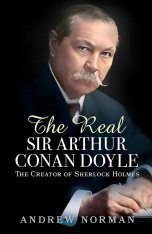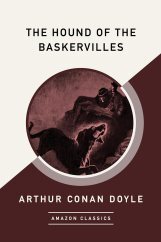Deception—Or how I figure out who done it
Writers specialize in sleight of hand. Mystery writers in particular. Playing fair is part of the canon of mystery writing. We plant clues in plain sight and give the reader all the tools necessary to solve the mystery, but we don’t paint the clues international orange or even fire engine red.
How do we do it? Sometimes very well, others, not so much. Sometimes we fool ourselves.
In a perfect book, all the clues are laid out for the reader to discover. Pro tip: clues are disguised in ordinary dialogue, mixed into a list of items, omissions, or objects too commonplace to stand out on their own. Once the clue has dropped, a red herring often follows as a form of writerly deception. Gotta watch those writers, they’re a tricky bunch.
 Red herrings are clues that take the protagonist, and the reader, on a chase to a dead end. So, if the complainant tells you it was a silent night on the moors (red herring), and you are Sherlock Holmes (if only), that’s a huge clue, eventually. In the meantime, the reader, Holmes, and Watson are led on a merry chase considering and discarding suspects until the red herring is shown to be an enigma and unwrapped to reveal its clue.
Red herrings are clues that take the protagonist, and the reader, on a chase to a dead end. So, if the complainant tells you it was a silent night on the moors (red herring), and you are Sherlock Holmes (if only), that’s a huge clue, eventually. In the meantime, the reader, Holmes, and Watson are led on a merry chase considering and discarding suspects until the red herring is shown to be an enigma and unwrapped to reveal its clue.
I have no idea how Conon Doyle did it so effectively, but I’d love to ask. If you look at his picture, you’ll note he has an amused glint in his eye. I’m betting he’s not talking.
How do I do it? Well, let me warn you. I have never successfully unwrapped my villain in the first draft. My first draft endings never satisfy. They always leave me with the unsettled feeling that I missed something. It’s during the second draft editing that my epiphany occurs and I discover my clues lead not to x but to y.
 Yes, much to my chagrin, red herrings fool both authors and readers. Even when I’m the one who wrote them. In a strange way fooling myself assures me the real clues are well planted and ably disguised by red herrings. How do I figure it out? It’s all in the process.
Yes, much to my chagrin, red herrings fool both authors and readers. Even when I’m the one who wrote them. In a strange way fooling myself assures me the real clues are well planted and ably disguised by red herrings. How do I figure it out? It’s all in the process.
I begin each book with the victim. In the process of dissecting a life cut short too soon, I uncover and make a list of likely clues. What about his life made him a victim? Why did the villain think he needed killing? Then I decide where in the book those clues will have the most impact, and how to hide them. At the same time, I work up a minimum of three alternate scenarios. Who else has motive, means, opportunity? Then I bullet point outline three different stories, each with a different ending. At this point, I have a dead person and no idea where to point the finger.
Once all the background work is done, I write the book. Because I’m a pantser, I write from chapter to chapter. The characters tell me their story, and I get so lost in the weeds of clues, red herrings, and justifications that they usually direct me to the wrong villain. In the second draft editing, I read the book as if I have no idea of the story because, well; I don’t. I force myself to follow the clues with a fresh eye and uncover the true culprit.
It’s all about the deception. The characters always control the story, and they do not play fair. At least not with this writer.
Lea Wait's Blog
- Lea Wait's profile
- 508 followers



